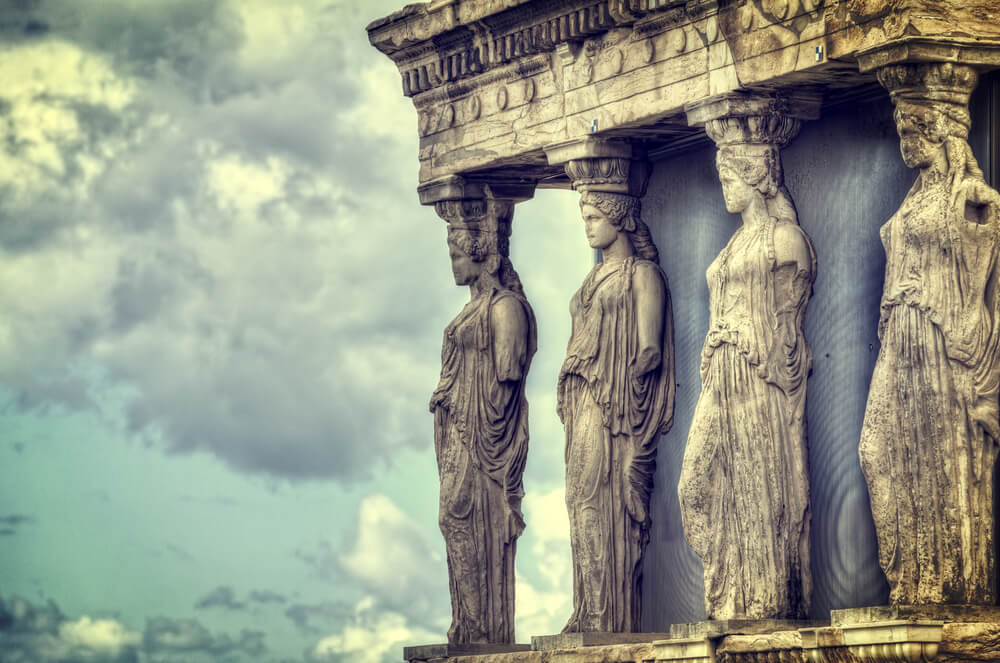Shilajit, ett ämne som är lika gammalt som bergen där det hittas, har fascinerat människor i århundraden. Dess ursprung och unika egenskaper har fascinerat oss genom historien. Forntida civilisationer värderade Shilajit högt för dess läkande krafter, och det första omnämnandet finns i en sanskrittext från omkring 600-talet f.Kr. Detta markerar början på dess anmärkningsvärda resa genom tiden.
Denna naturliga harts väcker spännande frågor bland vetenskapsmän och forskare: är Shilajit en organisk skapelse eller ett mineralunderverk? En bidragande orsak till detta mysterium är dess rika sammansättning - en blandning av essentiella vitaminer, aminosyror och många nyttiga ingredienser.

Shilajit, respekterad och känd under olika namn i regioner som Himalaya, Tibet, Altai och Kaukasus, har en speciell plats i många kulturer. När vi utforskar dess historia och vetenskapliga mysterier kan du föreställa dig bergens makt. Det är här som Shilajit uppenbarar sig. Med solens milda värme framträder denna mörka, hartsliknande substans och skapar slående strimmor mot bergens solida grå bakgrund - ett naturskådespel som skapats under tusentals år.
I gamla tider var Shilajit en plats för förundran och vördnad bland de människor som bodde i dessa bergiga regioner. Dess utseende sågs som en gåva från bergen själva, och man trodde att den hade extraordinära egenskaper. Människorna på den tiden förundrades över den mystiska substansen som uppstod i solens värme och betraktade den som en värdefull och kraftfull naturskatt.
När vi utforskar Shilajit upptäcker vi inte bara dess naturliga kraft utan också dess djupa kulturella betydelse. Att se dess mörka, rika textur på bergen är bara början på en meningsfull resa mot välbefinnande. Varje berättelse och vetenskaplig studie avslöjar mysteriet med Shilajit och visar upp dess naturliga blandning som främjar hälsa.
Shilajit, ett mystiskt ämne, har inte bara förekommit i gamla medicinska skrifter, utan också i många kulturers berättelser och myter runt om i världen. Varje berättelse och namn på Shilajit visar hur mycket människor respekterade och förundrades över den.
I Grekland kallades den "ozokerite", vilket betyder "som luktar vax". Detta namn inspirerades av deras möte med Shilajits ovanliga men fascinerande doft, vilket lämnade ett bestående intryck i deras minne, språk och folklore. När vi spårar Shilajits historiska resa hittar vi referenser till det i verk av Aristoteles, den berömda grekiska filosofen. Aristoteles omnämnande av Shilajit, även om det inte är detaljerat, betyder att det tidigt erkändes bortom Asiens geografiska gränser. Detta erkännande av en av de mest inflytelserika personerna inom västerländsk filosofi understryker den utbredda antika medvetenheten och värdet av Shilajit. Det belyser hur denna anmärkningsvärda substans fängslade sinnen i olika civilisationer och bidrog till en rik, global väv av medicinskt och kulturellt arv.
Araberna, som var kända för sin kärlek till berättelser och naturen, kallade Shilajit för "oraculjbol" eller "bergssvett". De kallade det också för "mumie". Dessa namn får oss att tänka på Shilajit som något speciellt från bergen, med starka läkande krafter.
I det indiska Ayurveda-systemet är Shilajit, känt som "Shilajatu", vördat för sina kraftfulla föryngrande egenskaper och sin roll i holistisk läkning. Det är mycket värdefullt för att stärka kroppens system och är en integrerad del av den ayurvediska metoden för att uppnå balans i kropp, själ och ande. Shilajit har dessutom flera olika namn i den indiska traditionen, bland annat "Mineral Pitch", "Black Asphaltum" och "Jewel of the Mountains". Dessa olika namn återspeglar dess breda användningsområden och den ayurvediska medicinens rika arv.
I de traditionella läkekonsterna i Sibirien värderas Shilajit, som ofta kallas "mumie", högt. Det ses som ett viktigt element för att återställa och bibehålla hälsan, och förkroppsligar den sibiriska respekten för naturliga, jordbaserade läkemedel. Detta kulturella perspektiv på Shilajit är ett bevis på det globala erkännandet av dess hälsofördelar.

Denna resa genom olika traditioner visar hur Shilajit, som värdesätts i olika kulturer, bygger broar mellan samhällen i deras gemensamma strävan efter välbefinnande.
Shilajit var väldokumenterat i gamla texter på olika språk, inklusive arabiska, turkiska, kinesiska, tatariska och hebreiska. I dessa texter lovordas Shilajit, eller "mummie", konsekvent för sin förmåga att behandla ett brett spektrum av sjukdomar. Det uppmärksammades för sin effektivitet mot mag- och tarmsjukdomar, njurproblem, tuberkulos, astma, lepra, förlamning, inflammation och hjärtsjukdomar. Den erkändes också för sin förmåga att motverka toxiner och läka sår, brännskador och särskilt hjälpa till vid återhämtning av benfrakturer.
Ibn Sina ( 980 - 1037 ), en framstående filosof och läkare i den muslimska världen, som blomstrade under den islamiska guldåldern, gav en detaljerad redogörelse för Shilajits terapeutiska användning i "The Canon of Medical Science". Han berömde det som ett mångsidigt botemedel och noterade dess effektivitet i ett brett spektrum av behandlingar. Utöver benläkning och andningsproblem observerade Ibn Sina också dess fördelar för matsmältningshälsan, hudföryngring och blodrening.
Hans insikter om Shilajits egenskaper återspeglar en djup förståelse för dess mineralrika sammansättning och antiinflammatoriska effekter. Han diskuterade också dess slemlösande egenskaper, som ger lindring vid andningsbesvär, och dess inverkan på den allmänna hjärthälsan och leverfunktionen.
Ibn Sina, i hans omfattande medicinska skrifter, betonade ytterligare Shilajits fördelar vid behandling av öron- och hörselproblem. Han tillskrev dess effektivitet till dess antiinflammatoriska egenskaper och förmåga att förbättra cirkulationen. Vid behandling av giftiga ormbett hyllade Ibn Sina dessutom Shilajits avgiftande och läkande egenskaper, och noterade dess roll för att neutralisera gift och påskynda vävnadsreparation. Hans detaljerade observationer understryker Shilajits olika terapeutiska tillämpningar och dess uppskattade plats inom traditionell medicin.
I det bredare perspektivet av medeltida medicin, understryker Ibn Sinas stöd för Shilajit dess vördade status inom olika medicinska traditioner. Hans detaljerade beskrivningar belyser inte bara dess mångfacetterade användningsområden utan också dess anpassningsförmåga vid behandling av olika sjukdomar, ett bevis på dess bestående arv i världen av naturläkemedel.
Den vetenskapliga utforskningen av Shilajit representerar en fascinerande konvergens mellan gammal visdom och modern forskning. Under de senaste decennierna har forskare intensivt studerat Shilajit och försökt bekräfta och förstå de påståenden som gjorts i gamla texter.
På senare tid har den vetenskapliga undersökningen av Shilajit kraftigt utökat vår förståelse av detta gamla botemedel. Modern forskning har fokuserat på att analysera dess sammansättning och bekräfta förekomsten av över 85 nyttiga ingredienser, inklusive mineraler, fulvosyra och en mängd andra bioaktiva föreningar. Denna forskning har validerat många av de traditionella användningarna av Shilajit, som nämns i gamla texter, och har avslöjat nya potentiella hälsofördelar.
Modern vetenskaplig forskning om Shilajit är främst inriktad på dess potentiella hälsofördelar och utforskar dess roll inom olika terapeutiska områden. Studier har undersökt Shilajits antioxidativa och antiinflammatoriska egenskaper, vilket kan bidra till dess effektivitet när det gäller att bekämpa oxidativ stress och inflammationsrelaterade sjukdomar. Det finns också intresse för dess potential att förbättra fysisk prestationsförmåga och energiproduktion, möjligen på grund av dess mineralinnehåll och påverkan på cellulära processer.
Dessutom undersöks dess effekter på kognitiva funktioner och potentiella fördelar vid neurodegenerativa sjukdomar.

Ett annat viktigt fokus för modern vetenskaplig forskning om Shilajit är dess potential för hormonellt stöd. Shilajit har studerats för sitt inflytande på hormonbalansen, särskilt i förhållande till det endokrina systemet. Forskare har undersökt dess effekter på hormoner som testosteron, som spelar en avgörande roll i olika aspekter av hälsa, inklusive muskelstyrka, energinivåer och reproduktiv funktion. Denna aspekt av Shilajits potentiella fördelar har uppmärksammats inom områdena sportnäring, mäns hälsa och allmänt välbefinnande.
Det är dock viktigt att notera att även om det finns lovande forskning inom detta område, behövs ytterligare studier för att fullt ut förstå omfattningen av Shilajits inverkan på hormonellt stöd och dess praktiska tillämpningar inom hälso- och sjukvård.
Shilajit, ett naturens underverk, har sitt ursprung i en värld som inte påverkats av föroreningar. Dess anmärkningsvärda läkande egenskaper hyllas i antika texter, myter och modern vetenskap. Detta urgamla elixir överbryggar det mystiska och det beprövade och erbjuder en blandning av gudomlig touch, historisk rikedom och bestående läkande fördelar som har stått sig genom tiderna.
Fler källor:

Upphovsrätt 2024 © Mountaindrop. Alla rättigheter reserverade. Drivs av EOSNET









